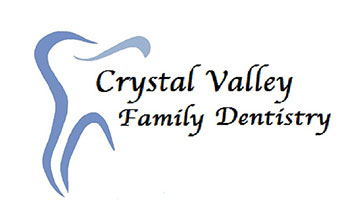
Types of Periodontal Disease
Periodontal (gum) disease is a progressive disease that can result in damaged gums, damaged jaw bone, and tooth loss. Periodontal disease is caused by plaque bacteria that cause infection when not removed. Inflamed and irritated gums around the teeth are the first sign of periodontal disease. The infection spreads and the bacteria begin damaging gum tissue, causing pockets to form between the teeth and gums. You may notice your gums begin to recede. Early periodontal disease is reversible, but if not taken care of early, the disease can worsen and destroy your gums, jaw bone, and make you lose teeth. Infectious bacteria can even travel to other parts of the body through the bloodstream.
Types of Periodontal Disease
There are many different severities and types of periodontal disease. Here are the different kinds and the treatment for them:
- Gingivitis: Gingivitis is the earliest stage or the predecessor of periodontal disease. The main cause of gingivitis is plaque buildup from poor oral hygiene. You’ll notice red, irritated gums around the teeth, as well as bleeding when brushing and/or flossing. You should never bleed when brushing or flossing! You are at more risk for this if you take certain medications for various diseases. Please look up the side effects of your medication to see if you are more susceptible to gum disease.
- Treatment: Gingivitis is easy to reverse by practicing proper oral care at home and visiting your dentist office for professional cleanings. Your dentist may perform in-depth scaling or planing to remove trapped plaque and tartar from under the gum line.
- Chronic Periodontal Disease: This form of the disease is the most common, especially in people over 45 years of age. At this point, the inflamed gum line will begin to recede, making the teeth appear longer. Damage to gum and bone tissue are irreversible at this point.
- Treatment: Like said above, damage to the gum and bone are irreversible and can not be rebuilt. However, the periodontist can help by stopping the disease from doing any further damage using scaling and root planing procedures. This will clean out the bacteria from the deep parts of your gumline. Other surgical procedures such as pocket reduction and tissue grafts can be performed if necessary.
- Aggressive Periodontal Disease: Aggressive periodontal disease is about the same as chronic periodontal disease except the progression is much faster. Smokers and those who have a family history of the disease are more likely to develop this. Rapid deterioration of the gums and supporting jawbone are among the symptoms.
- Treatment: This form of gum disease is harder to stop the progression of, so surgery might be unavoidable. Your dentist or periodontist will perform the same procedures as with chronic periodontal disease.
- Periodontal Disease Relating to Systemic Conditions: Heart disease, diabetes and respiratory disease are just a few of the diseases known to be linked to gum disease. It’s very important to practice good oral hygiene if you have one of these diseases.
- Treatment: Dr. Regan DDS can use the same methods to halt the disease as used in aggressive periodontal disease, but the underlying condition needs to be treated to have lasting effects.
- Necrotizing Periodontal Disease: Necrotizing Gum Disease is rare but mostly found in those with immune deficiency diseases, those who are malnourished, and tobacco users. At this stage, tissue death will destroy the supporting structures of the teeth which can lead to them becoming loose and falling out.
- Treatment: Before Dr. Regan DDS can treat necrotizing periodontal disease, they may consult with a physician to determine what is best for your needs. This form of gum disease may require some stronger treatment. Scaling, root planing, antibiotics, prescribed medicated mouth wash and fungicidal medicines can all be used.
Contact our office if you have any questions about periodontal disease.


